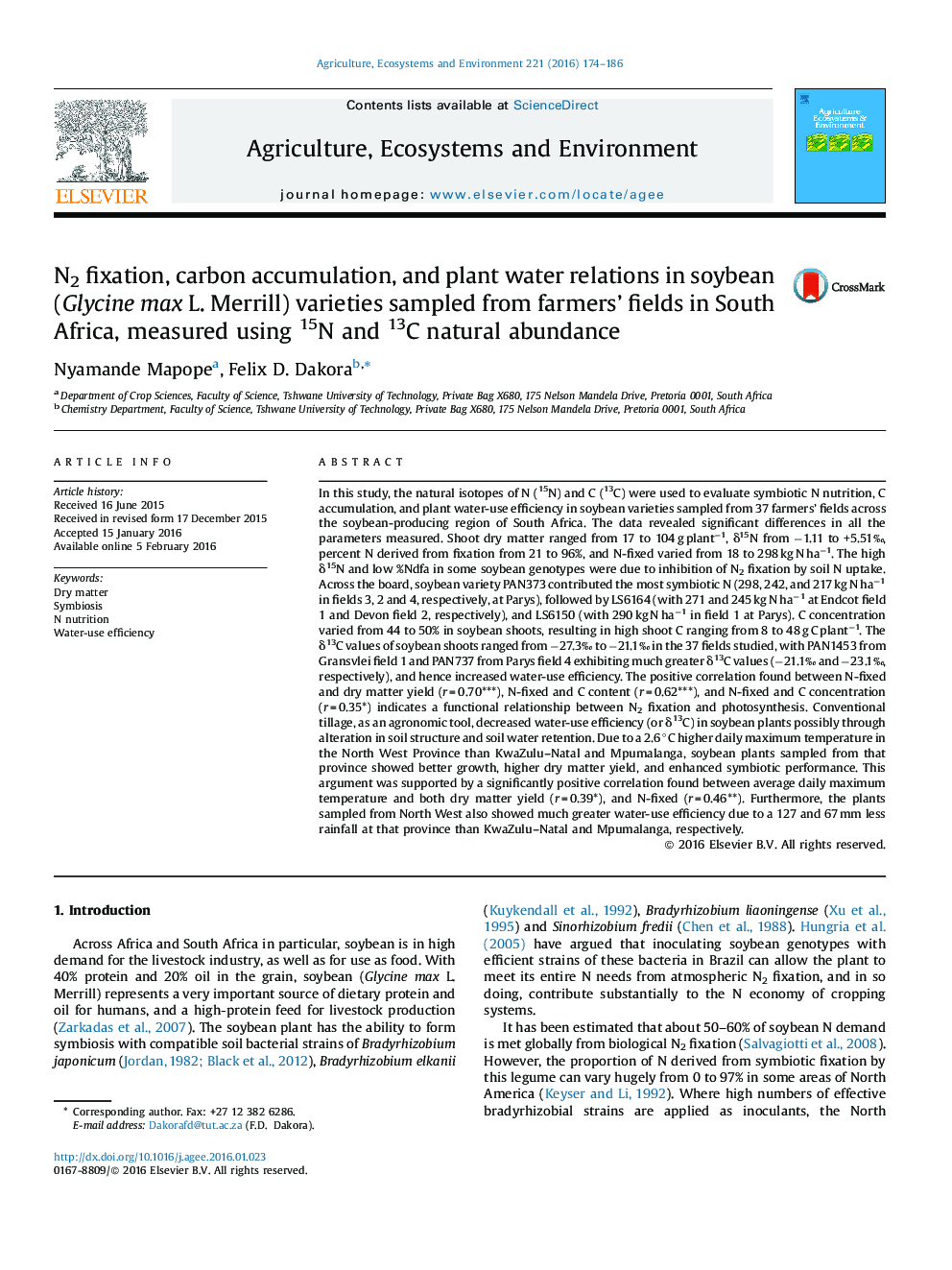| Article ID | Journal | Published Year | Pages | File Type |
|---|---|---|---|---|
| 8487453 | Agriculture, Ecosystems & Environment | 2016 | 13 Pages |
Abstract
In this study, the natural isotopes of N (15N) and C (13C) were used to evaluate symbiotic N nutrition, C accumulation, and plant water-use efficiency in soybean varieties sampled from 37 farmers' fields across the soybean-producing region of South Africa. The data revealed significant differences in all the parameters measured. Shoot dry matter ranged from 17 to 104 g plantâ1, δ15N from â1.11 to +5.51â°, percent N derived from fixation from 21 to 96%, and N-fixed varied from 18 to 298 kg N haâ1. The high δ15N and low %Ndfa in some soybean genotypes were due to inhibition of N2 fixation by soil N uptake. Across the board, soybean variety PAN373 contributed the most symbiotic N (298, 242, and 217 kg N haâ1 in fields 3, 2 and 4, respectively, at Parys), followed by LS6164 (with 271 and 245 kg N haâ1 at Endcot field 1 and Devon field 2, respectively), and LS6150 (with 290 kg N haâ1 in field 1 at Parys). C concentration varied from 44 to 50% in soybean shoots, resulting in high shoot C ranging from 8 to 48 g C plantâ1. The δ13C values of soybean shoots ranged from â27.3â° to â21.1â° in the 37 fields studied, with PAN1453 from Gransvlei field 1 and PAN737 from Parys field 4 exhibiting much greater δ13C values (â21.1â° and â23.1â°, respectively), and hence increased water-use efficiency. The positive correlation found between N-fixed and dry matter yield (r = 0.70***), N-fixed and C content (r = 0.62***), and N-fixed and C concentration (r = 0.35*) indicates a functional relationship between N2 fixation and photosynthesis. Conventional tillage, as an agronomic tool, decreased water-use efficiency (or δ13C) in soybean plants possibly through alteration in soil structure and soil water retention. Due to a 2.6 °C higher daily maximum temperature in the North West Province than KwaZulu-Natal and Mpumalanga, soybean plants sampled from that province showed better growth, higher dry matter yield, and enhanced symbiotic performance. This argument was supported by a significantly positive correlation found between average daily maximum temperature and both dry matter yield (r = 0.39*), and N-fixed (r = 0.46**). Furthermore, the plants sampled from North West also showed much greater water-use efficiency due to a 127 and 67 mm less rainfall at that province than KwaZulu-Natal and Mpumalanga, respectively.
Related Topics
Life Sciences
Agricultural and Biological Sciences
Agronomy and Crop Science
Authors
Nyamande Mapope, Felix D. Dakora,
